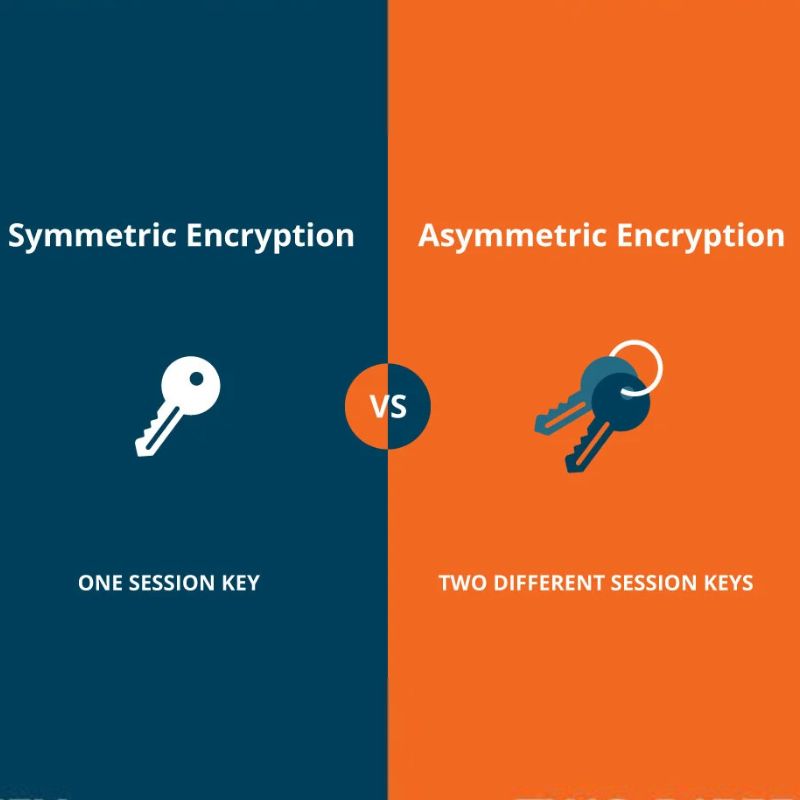In today’s digital age, protecting sensitive information is more important than ever. Whether it’s securing emails, online transactions, or stored data, encryption plays a critical role. Two primary types of encryption exist: symmetric and asymmetric. If you’ve ever wondered about the difference between symmetric and asymmetric encryption, you’re not alone.
Why Encryption Matters More Than Ever

As our lives become increasingly digital—from banking and shopping to communication and healthcare—protecting sensitive data has become a top priority. Cybersecurity threats are evolving, and personal and organizational data is constantly at risk of being intercepted or tampered with. Encryption stands as a critical line of defense, ensuring that information remains confidential and secure. Knowing the difference between symmetric and asymmetric encryption helps individuals and businesses choose the right tools to safeguard data effectively in a connected world.
This article offers a human-written, easy-to-follow explanation of both types of encryption, how they work, their practical applications, and which one to use in different scenarios. Let’s break it down.
What Is Encryption?
Encryption is the process of converting readable data (plaintext) into an unreadable format (ciphertext) using algorithms. This protects information from unauthorized access. Only those with the correct key can decrypt the data and return it to its original form.
What Is Symmetric Encryption?
Symmetric encryption uses a single secret key to both encrypt and decrypt data. This key must be shared between the sender and receiver.
How It Works:
- The sender encrypts the message using a secret key.
- The encrypted data is transmitted.
- The receiver uses the same secret key to decrypt it.
Common Algorithms:
- AES (Advanced Encryption Standard)
- DES (Data Encryption Standard)
- Blowfish
Advantages:
- Fast and efficient, even with large data volumes.
- Ideal for encrypting stored files, databases, or entire disks.
Disadvantages:
- The key must be shared securely. If intercepted, the system can be compromised.
- Managing multiple keys in large systems becomes difficult.
You can learn more about symmetric encryption from this IBM explanation.
What Is Asymmetric Encryption?
Asymmetric encryption uses two keys: a public key and a private key. The public key is available to anyone, while the private key is kept secret by the owner.
How It Works:
- The sender encrypts the message using the receiver’s public key.
- The receiver decrypts it using their private key.
Common Algorithms:
- RSA (Rivest-Shamir-Adleman)
- ECC (Elliptic Curve Cryptography)
- DSA (Digital Signature Algorithm)
Advantages:
- More secure for data transmission, especially over the internet.
- No need to share private keys.
Disadvantages:
- Slower than symmetric encryption.
- Not ideal for large data encryption on its own.
A more detailed technical overview is available from Cloudflare’s blog.
The Core Difference Between Symmetric and Asymmetric Encryption
The main difference between symmetric and asymmetric encryption lies in the number of keys used and how they are managed.
| Feature | Symmetric Encryption | Asymmetric Encryption |
| Number of Keys | One key (shared) | Two keys (public and private) |
| Speed | Faster | Slower |
| Key Distribution | Must be kept secret and shared securely | Public key is shared openly; private is kept secret |
| Use Case | Encrypting data at rest | Secure communication over the internet |
| Example | File encryption, VPN | Secure email, SSL/TLS for websites |
Real-World Applications
When to Use Symmetric Encryption:
- Encrypting entire databases or hard drives.
- Protecting local files.
- In environments where secure key exchange is possible.
When to Use Asymmetric Encryption:
- Sending encrypted messages over insecure networks.
- Digital signatures and certificates.
- Secure web browsing (HTTPS).
In practice, most modern systems combine both methods. For example, SSL/TLS protocols use asymmetric encryption to securely exchange a symmetric key, which is then used for faster data transfer.
Is One Better Than the Other?
Not necessarily. Each has strengths and weaknesses. For instance, symmetric encryption is much faster, making it ideal for bulk data. However, asymmetric encryption adds a higher level of security in situations where key sharing is not safe.
Understanding the difference between symmetric and asymmetric encryption helps you choose the right tool depending on your security needs.
FAQs
Q1: What is the main difference between symmetric and asymmetric encryption?
Symmetric encryption uses the same key for encryption and decryption, while asymmetric encryption uses two different keys—a public key and a private key.
Q2: Is asymmetric encryption more secure than symmetric encryption?
It offers better security for transmitting data over the internet because it doesn’t require sharing a secret key.
Q3: Why is symmetric encryption faster?
Because it uses simpler algorithms and a single key, symmetric encryption is less computationally intensive.
Q4: Can both be used together?
Yes. Many systems use asymmetric encryption to share a symmetric key, combining security and speed.
Q5: Which encryption does HTTPS use?
HTTPS uses asymmetric encryption to establish a secure connection, then switches to symmetric encryption for data transfer.
Conclusion
The difference between symmetric and asymmetric encryption is essential knowledge for anyone concerned with digital privacy and security. Symmetric encryption is faster and ideal for internal or closed systems, while asymmetric encryption is preferred for secure communication across networks.
Most modern applications use a combination of both to balance speed and security. If you’re working in IT, cybersecurity, or just want to understand how your data is protected online, knowing how these two encryption methods differ—and when to use each—will make you more informed and digitally secure. To learn more, visit MindScribes
For more in-depth tech insights, software tools, and cybersecurity best practices, check out trusted resources like IBM’s guide on encryption or Cloudflare’s learning portal.

